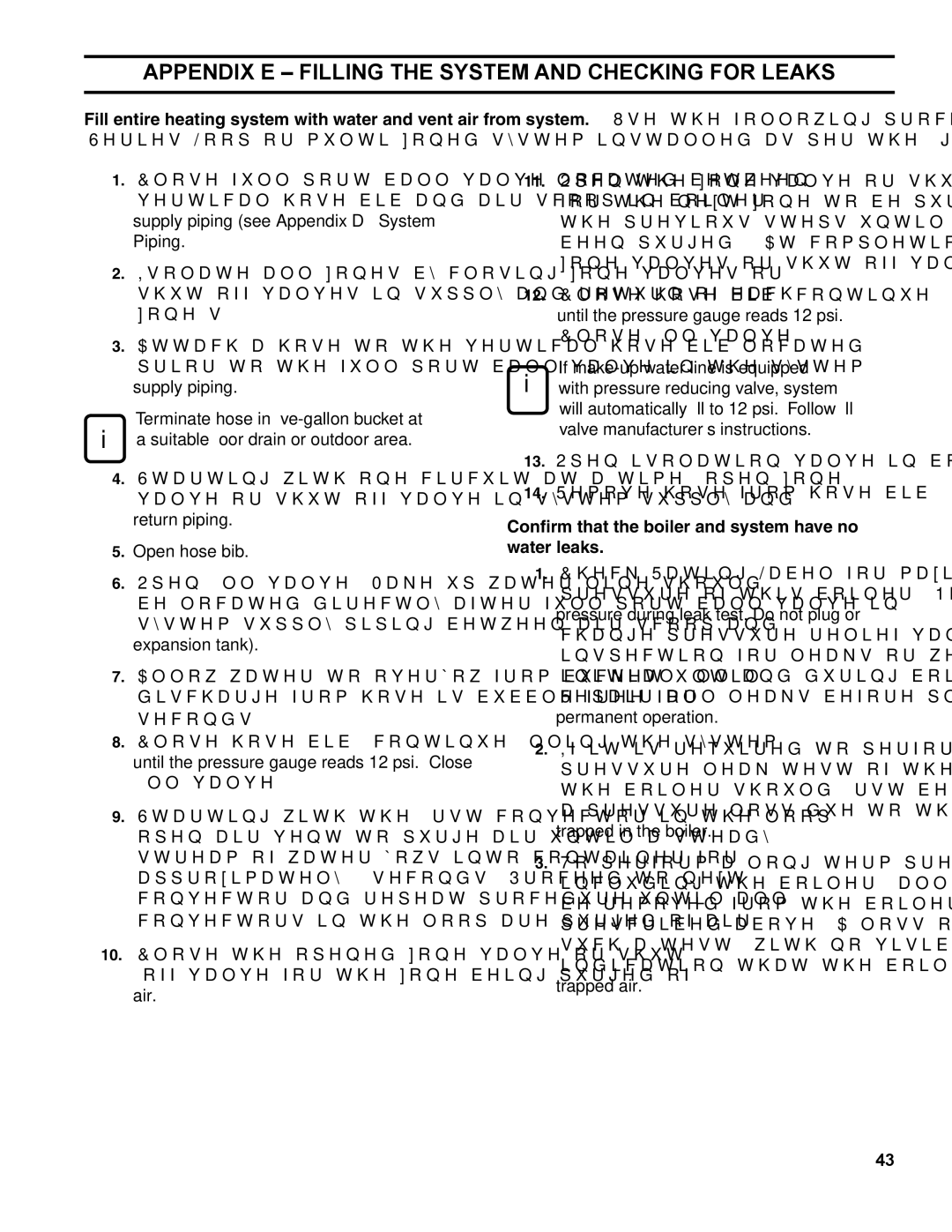
APPENDIX E – Filling the System and Checking for Leaks
Fill entire heating system with water and vent air from system. Use the following procedure on a Series Loop or
1.Close full port ball valve located between vertical hose bib and air scoop in boiler supply piping (see Appendix D – System Piping.
2.Isolate all zones by closing zone valves or
3.Attach a hose to the vertical hose bib located prior to the full port ball valve in the system supply piping.
i | Terminate hose in |
a suitable floor drain or outdoor area. |
4.Starting with one circuit at a time, open zone valve or
5.Open hose bib.
6.Open fill valve
7.Allow water to overflow from bucket until discharge from hose is bubble free for 30 seconds.
8.Close hose bib, continue filling the system until the pressure gauge reads 12 psi. Close fill valve.
9.Starting with the first convector in the loop, open air vent to purge air until a steady stream of water flows into container for approximately 5 seconds. Proceed to next convector and repeat procedure until all convectors in the loop are purged of air
10.Close the opened zone valve or shut- off valve for the zone being purged of air.
11.Open the zone valve or
12.Close hose bib, continue filling the system until the pressure gauge reads 12 psi.
Close fill valve.
If
i with pressure reducing valve, system will automatically fill to 12 psi. Follow fill valve manufacturer’s instructions.
13.Open isolation valve in boiler supply piping.
14.Remove hose from hose bib.
Confirm that the boiler and system have no water leaks.
1.Check Rating Label for maximum operating pressure of this boiler. Never exceed this pressure during leak test. Do not plug or change pressure relief valve. Perform visual inspection for leaks or weeping joints after initial fill and during boiler
2.If it is required to perform a
3.To perform a
43
